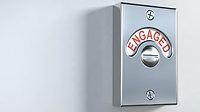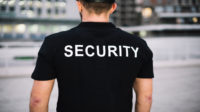The Problem with Traditional Locks and Managing Remote Access to Rental Properties
And How to Achieve Trusted Access Instead

If you are a landlord who owns rental property in a different state (or a significant distance away) and you are relying upon traditional locks to manage access to your property, this article will show you a better, more secure, time-saving and money-saving property security system.
If you’re still reading, you’re probably one of many individual investors, a.k.a. “mom and pop” landlords, who own about 16.7 million properties in the U.S., according to 2015 data from HUDuser.gov. Individual investors are more likely to own single-family and duplex rental homes, the site states.
Although missing from the data, a percentage of these rental properties are long-distance, where the property is located in a different state than the landlord. Vacation homes that were purchased in 2016 were a median of 200 miles from the buyer’s primary residence, according to economists at the National Association of Realtors.
In today’s sharing economy, rentals and second homes are receiving a lot more guest traffic due to an increase in short-term rental bookings. People are granting access to their homes, vehicles and rental properties more often than ever before. Home rental services like Airbnb and VRBO are doubling and tripling year over year. Americans are traveling more. There’s been a sharp increase in solo-traveler bookings, leaving their properties unattended. E-commerce is on the rise which means package deliveries are increasing. Pet care and dog walking services are booming.
Why mention these socio-cultural shifts?
These trends are exposing gaps in the remote property security market. There are horror stories of guests taking improper advantage of Airbnb hosts. “Porch pirates” are stealing Amazon packages off of doorsteps. And property owners can’t always be there to receive necessary services such as cleaning, maintenance and pet care. Here’s the problem.
Traditional locks for remote access are functional at best, but are ultimately unreliable, costly and full of guesswork.
Traditional remote access has been around for decades. Commonly, Hide-a-keys and pin code locks have been easy enough to grant long-distance access, but physical keys and pin codes can fall into the wrong hands. This happens often in the multifamily rental industry. Lost keys, evicted tenants, damaged locks and burglary—these incidents force property managers to rekey locks every time. The costs can add up.
But a greater problem with remote access is the lack of authentication. Landlords need to be able to verify that their tenants are who they say they are and that their property is used in the way it was paid for.
In today’s world of prevalent identity fraud (16.7 million individuals affected in 2017), a digital account doesn’t always align with what’s happening in real life. For example, if a property owner who owns a unit located across the country receives a booking from a solo traveler, how does the property owner know the solo traveler doesn’t bring along a group of say, four more people to the unit? The booking for one could turn into a party of five, and four of those guests didn’t pay. The property owner has no way to tell for sure and as a result, may lose money or incur damage or greater cleaning fees. This is an example of a problem that can occur when authentication is missing. To remedy this:
Trusted Access is the new standard of remote property entrance security.
Trusted Access is the ability to authenticate those to whom you give access to your property, just as your iPhone uses facial recognition to allow access to your device, and blockchain verifies crypto transactions in a public ledger. With Trusted Access, you can trust the transaction to be 100 percent correct. The same is possible to authenticate visitors and guests accessing a property—using an internet-connected, video-equipped, keypad smart lock system.
The three components of Trusted Access are an internet-connected lock, live video streaming and physical authentication.
- First, a security system must connect to the internet so that the landlord can create and customize access for each visitor from anywhere in the world. Usually, this is done using an app—there’s no need to be present at the property to manage guests. Whereas Bluetooth and other near-field technology is limited to closer proximities, Wi-Fi can reach across the world via a network connection. Some smart locks require a separate hub to connect to the internet, while others integrate Wi-Fi directly into the smart lock (recommended). In summary, an internet-connected lock provides the landlord with 24/7 accessibility from anywhere there is Wi-Fi.
- Second, live video (and ideally two-way audio) streaming allows long-distance landlords to visually (and audibly) authenticate guests and renters by “seeing” and “hearing” that the individuals accessing their property match the rental agreement. This is verifiable proof that the transaction is 100 percent correct. Two-way audio also allows the landlord to communicate with the visitor in real time and provide any instruction needed.
- Third, a physically authenticated method of entry administers unique access to each visitor. This can be done securely and reliably using a keypad (a standard feature on most smart locks). Landlords issue (via an app or web interface) time-restricted pin codes for a visitor (i.e., cleaning service, family member, neighbor) in order to track activity and limit the access to a specific time frame, when desired.
The short-term remote rental options of today open the door to new security risks. By monetizing one’s second property, owners are permitting strangers into the house more often than before while they are not there. If something goes wrong, there’s not much one can do other than a last resort call to the local police. But criminal activity is a worst-case-scenario.
More commonly, there are violations of contract terms that don’t warrant intercession by law enforcement, but still incur damages and losses for long-distance landlords. How can property owners and Airbnb owners achieve a more sophisticated security system and feel more comfortable letting guests into their homes? Trusted Access. The future of property security is human authentication through an internet-connected, video-enabled keypad smart lock.
Looking for a reprint of this article?
From high-res PDFs to custom plaques, order your copy today!





